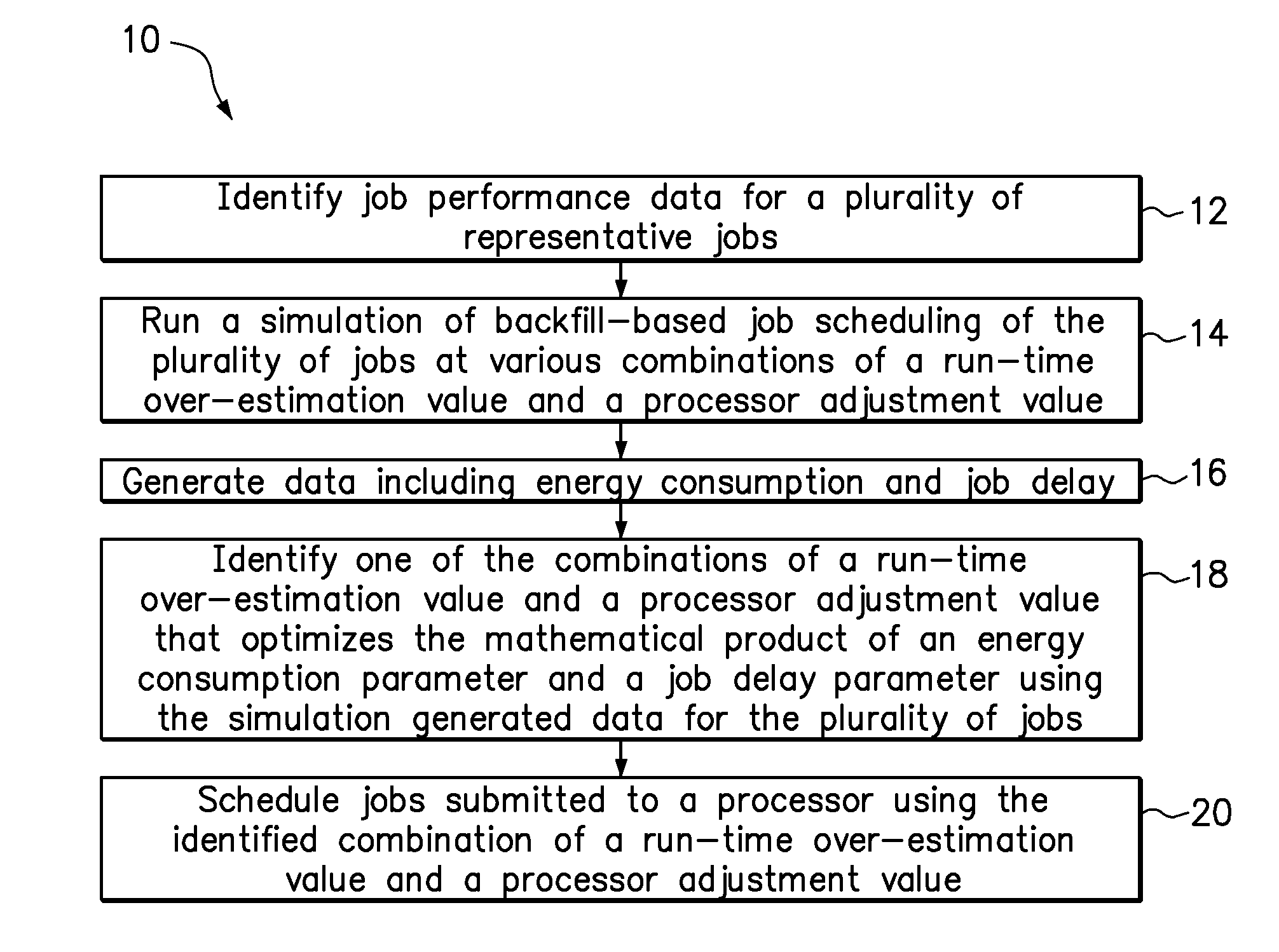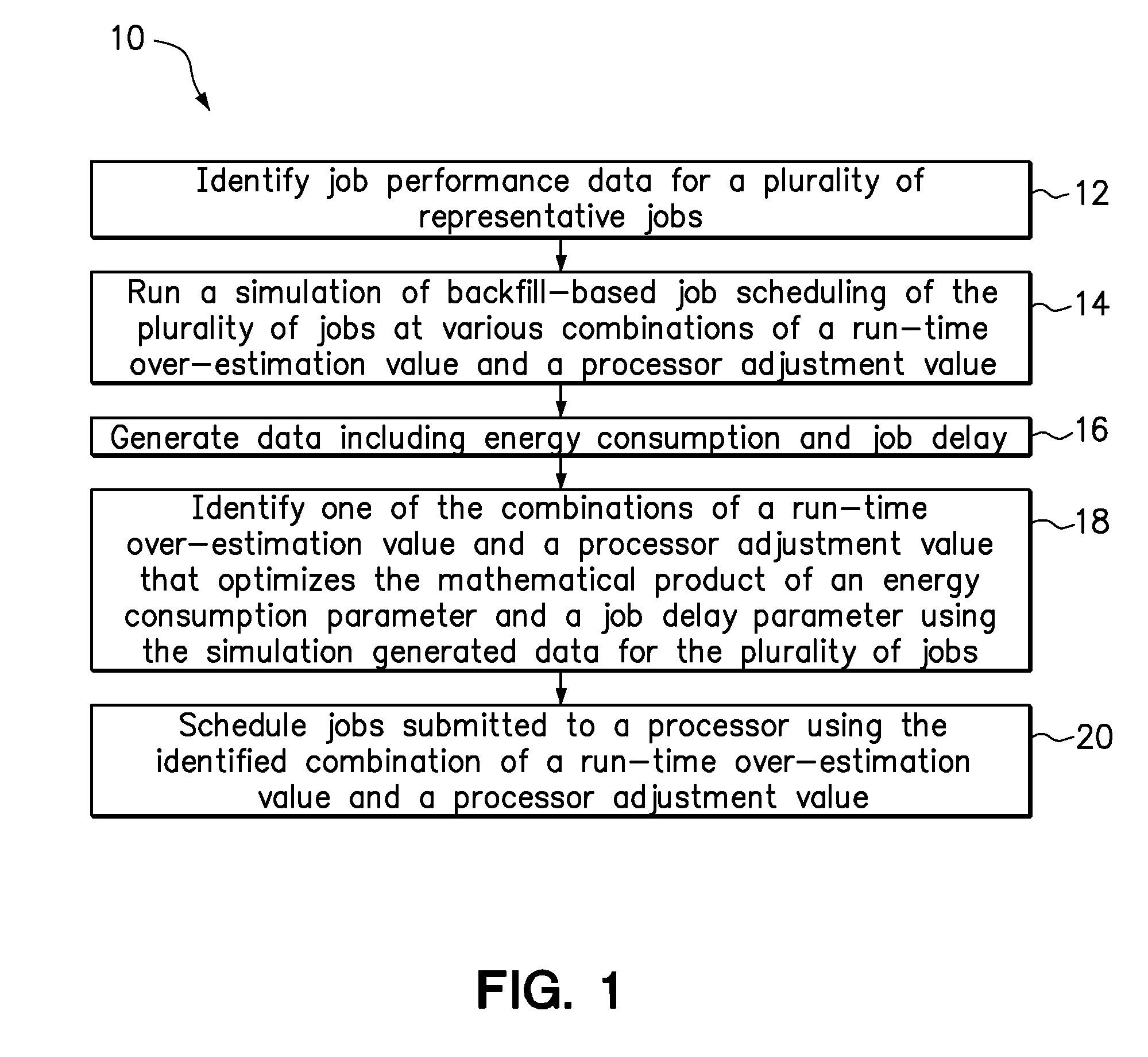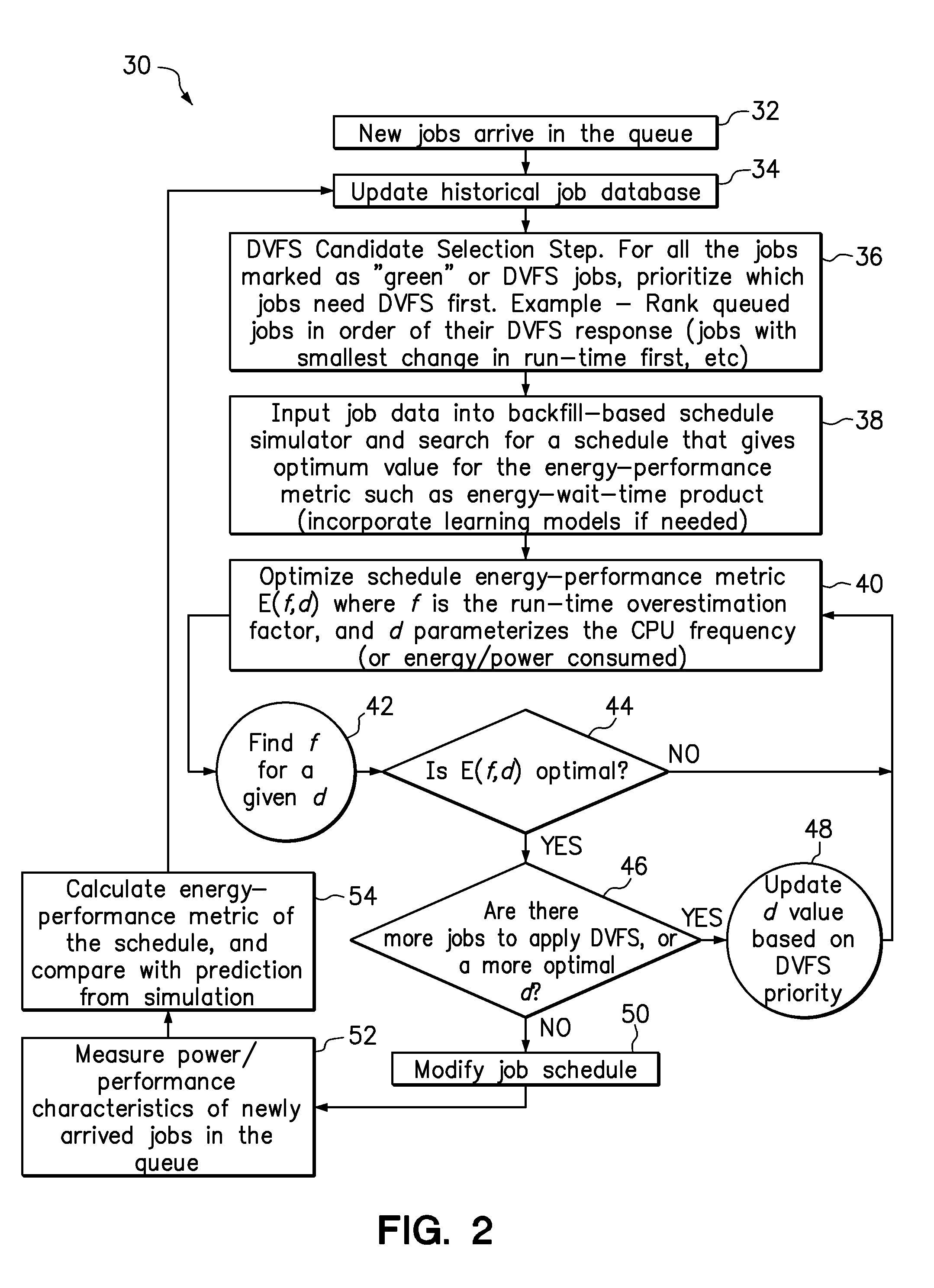Job scheduling to balance energy consumption and schedule performance
a technology of schedule performance and job scheduling, applied in the field of job scheduling, can solve problems such as affecting program performance, affecting program performance, and varying the energy spent in computation at the expense of computational speed, and the time taken to process a submitted compute task is much larger
- Summary
- Abstract
- Description
- Claims
- Application Information
AI Technical Summary
Benefits of technology
Problems solved by technology
Method used
Image
Examples
example 1
[0052]FIG. 3 illustrates the performance of a scheduling method that uses run-time over-estimation and DVFS, but does not run a simulation to optimize an energy-wait time product. Generally, the application of DVFS to jobs has two major effects. First, the overall execution time of some of the DVFS candidate jobs could increase, leading to an increase in the delay (or wait time) felt by other jobs, and correspondingly increasing both the average wait time and average slowness. Second, due to the increased execution time of DVFS candidate jobs, for a constant run-time overestimation factor, the temporal gap (shadow-time) for backfill reduces, thus preventing jobs that could have backfilled in those shadow-time gaps in the absence of DVFS application—again this contributes to an increase in the average wait time and slowness. Therefore, when DVFS is applied after run-time overestimation is done on a schedule, the application of DVFS could potentially cause the schedule performance to ...
example 2
[0059]FIG. 4 illustrates the performance of a scheduling method that uses run-time overestimation compensated DVFS-backfill (ROC-DVFS backfill) in accordance with the present invention. During simulation, an optimal energy-wait time product is achieved with a run-time overestimation factor of 2.025 (an increase of only 0.025 from the run-time over-estimation factor of 2 in Example 1. However, as shown, the schedule performance increases. For example, the average wait time drops from 5.17 hours (Example 1) to 4.20 hours (Example 2), and the average slowness drops from 3.34 (Example 1) to 2.86 (Example 2). This increase in schedule performance occurs because jobs that could not be backfilled in Example 1 due to the reduced size of temporal gaps caused by the application of DVFS, are now able to backfill since the temporal gaps are increased by the greater run-time over-estimation factor. Another reason for the increase in schedule performance is that the application of DVFS causes the...
example 3
[0070]FIG. 5 provides a graph showing the improvement in scheduling performance after using ROC-DVFS backfill, in accordance with one embodiment of the present invention. Specifically, FIG. 5 compares the energy-wait time product resulting from four different combinations of the average over-estimation factor f (see column 4) and the frequency factor d (see column 9). For these four cases, FIG. 5 shows the DVFS-Applied Jobs, the Frequency factor d used for DVFS Jobs, the Average Wait Time, the Average Energy Consumed, the Average Slowness, the Weighted Average Slowness, and the Energy-Wait-Time Product.
TABLE 3DVFS-AverageAverageAverageWeightedFrequencyEnergy-AppliedDVFS-Energyover-WaitAverageAveragefactor dwait-timeJobsAppliedConsumedestimationtime Slowness Slownessfor DVFSproduct(Y1)time(Y1)factorComment(Y1)(Y1)(Y1)jobs (Y1)(Y2)003.51.6No DVFS4.372.671.251.0015.28003.52No DVFS4.172.791.191.0014.583173.37252DVFS5.173.341.480.9017.423173.37252.025ROC-DVFS4.202.861.200.9014.16
[0071]Wh...
PUM
 Login to View More
Login to View More Abstract
Description
Claims
Application Information
 Login to View More
Login to View More - R&D
- Intellectual Property
- Life Sciences
- Materials
- Tech Scout
- Unparalleled Data Quality
- Higher Quality Content
- 60% Fewer Hallucinations
Browse by: Latest US Patents, China's latest patents, Technical Efficacy Thesaurus, Application Domain, Technology Topic, Popular Technical Reports.
© 2025 PatSnap. All rights reserved.Legal|Privacy policy|Modern Slavery Act Transparency Statement|Sitemap|About US| Contact US: help@patsnap.com



